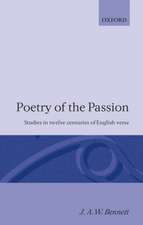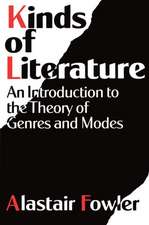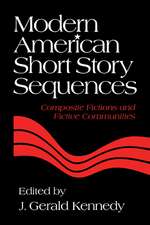Imagining Paris: Exile, Writing, and American Identity
Autor J. Gerald Kennedyen Limba Engleză Paperback – 10 sep 1994
Between 1900 and 1940, Paris was the capital of high modernism and the center of artistic experimentation—Paris was "where the twentieth century was," claimed Gertrude Stein. In this book, J. Gerald Kennedy explores how living in Paris shaped the careers and literary works of five expatriate Americans: Gertrude Stein, Ernest Hemingway, Henry Miller, F. Scott Fitzgerald, and Djuna Barnes. Kennedy shows that the writings of these authors reveal their various struggles to accommodate themselves to a complex, foreign scene, to construct an expatriate self, or to understand the contradictions of American identity. He treats these figures and their narratives as instances of the profound effect of place on writing and on the formation of the self.
According to Kennedy, Stein's Paris, France presents an abstraction, a series of random and discontinuous images refracted into a theory of the French way of life. Her self- portrait in The Autobiography of Alice B. Toklas, however, hinges on a contrast between the outside world of galleries, studios, and exhibitions and her inner domain at 27, rue de Fleurus. Hemingway's conflict with Paris, says Kennedy, betrays both an attraction to its danger and a disgust with its profligacy, as seen in the ambivalent imagery of The Sun Also Rises. Miller's Paris emerges in his Letters to Emil and Tropic of Cancer as a tormenting world of alleyways, sewers, and flophouses that nevertheless becomes a site of deliverance where Miller discovers himself as a literary subject. The nocturnal, unreal Paris of Fitzgerald's Tender Is the Night and Barnes's Nightwood reflects the disorientation of modernism, which parallel and intensify the estrangement of exile.
According to Kennedy, Stein's Paris, France presents an abstraction, a series of random and discontinuous images refracted into a theory of the French way of life. Her self- portrait in The Autobiography of Alice B. Toklas, however, hinges on a contrast between the outside world of galleries, studios, and exhibitions and her inner domain at 27, rue de Fleurus. Hemingway's conflict with Paris, says Kennedy, betrays both an attraction to its danger and a disgust with its profligacy, as seen in the ambivalent imagery of The Sun Also Rises. Miller's Paris emerges in his Letters to Emil and Tropic of Cancer as a tormenting world of alleyways, sewers, and flophouses that nevertheless becomes a site of deliverance where Miller discovers himself as a literary subject. The nocturnal, unreal Paris of Fitzgerald's Tender Is the Night and Barnes's Nightwood reflects the disorientation of modernism, which parallel and intensify the estrangement of exile.
Preț: 295.95 lei
Nou
Puncte Express: 444
Preț estimativ în valută:
56.64€ • 58.79$ • 47.23£
56.64€ • 58.79$ • 47.23£
Carte tipărită la comandă
Livrare economică 24 martie-07 aprilie
Preluare comenzi: 021 569.72.76
Specificații
ISBN-13: 9780300061024
ISBN-10: 0300061021
Pagini: 288
Ilustrații: 12 b-w illus.
Dimensiuni: 156 x 235 x 17 mm
Greutate: 0.37 kg
Ediția:Revised
Editura: Yale University Press
Colecția Yale University Press
Locul publicării:United Kingdom
ISBN-10: 0300061021
Pagini: 288
Ilustrații: 12 b-w illus.
Dimensiuni: 156 x 235 x 17 mm
Greutate: 0.37 kg
Ediția:Revised
Editura: Yale University Press
Colecția Yale University Press
Locul publicării:United Kingdom














